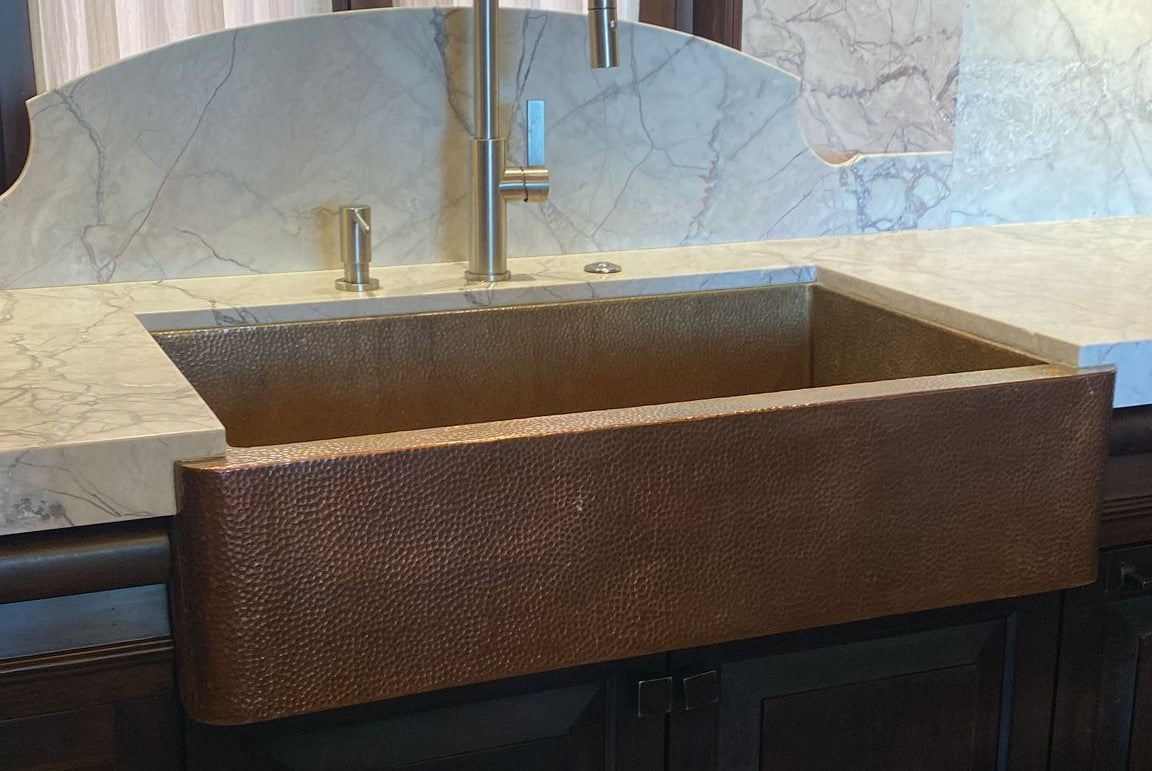Your Essential Guide to Cleaning and Caring for Copper Sinks

Copper sinks add a touch of elegance and warmth to any kitchen or bathroom. Known for their unique patina and antimicrobial properties, copper sinks require proper care to maintain their beauty and functionality. This guide provides essential tips for cleaning and caring for your copper sink.

1. Understanding Copper: The Living Metal
Copper is a living metal, meaning it reacts with its environment, developing a natural patina over time. This patina, a protective layer, gives copper its characteristic look, transitioning from shiny to a darker, aged appearance. Understanding this natural process is key to proper care.
2. Daily Cleaning Routine
- Rinse After Use: Rinse the sink with warm water after each use to remove food particles, soap, and other residues. This helps prevent water spots and stains.
- Gentle Wipe-Down: Use a soft cloth or sponge with mild dish soap to wipe down the sink. Avoid abrasive pads or harsh chemicals, as they can damage the patina.
- Dry Thoroughly: After rinsing, dry the sink with a soft cloth to prevent water spots and mineral deposits.
3. Weekly Deep Cleaning
- Create a Natural Cleaner: Mix a solution of equal parts warm water and mild dish soap. For stubborn spots, add a few drops of white vinegar.
- Scrub Gently: Use a soft-bristled brush or sponge to scrub the sink. Pay extra attention to corners and around the drain.
- Rinse and Dry: Rinse thoroughly with warm water and dry with a soft cloth.

4. Maintaining the Patina
- Avoid Harsh Chemicals: Bleach, ammonia, and acidic cleaners can strip the patina, causing uneven coloration.
- Limit Exposure to Acidic Foods: Avoid leaving acidic foods or substances like lemon, vinegar, or tomato juice in the sink for extended periods. These can cause bright spots or discoloration.
- Waxing (Optional): Some homeowners choose to apply a thin layer of wax to protect the patina. Use a beeswax-based copper wax, applying it once every few months for extra protection.

5. Dealing with Stains and Tarnish
- Patina-Friendly Cleaning: For green spots or tarnish, use a mixture of baking soda and water to form a paste. Gently rub the area with a soft cloth, then rinse and dry.
- Removing Patina (If Desired): If you prefer the shiny appearance of new copper, you can use a copper polish. Be aware that this will remove the patina, and you'll need to reapply it periodically to maintain the shine.
6. Preventative Measures
- Use a Sink Mat: Place a sink mat or protective grid at the bottom to prevent scratches from heavy pots and pans.
- Dry Sponges and Towels Outside the Sink: Avoid leaving wet sponges or towels in the sink, as they can cause water spots or discoloration.
- Address Mineral Deposits Promptly: In areas with hard water, wipe down the sink regularly to prevent mineral deposits from building up.
7. Long-Term Care
- Embrace the Patina: Over time, your sink will develop a unique patina that reflects its history and use. Embrace this natural aging process as part of the charm of owning a copper sink.
- Professional Care: If your sink develops deep scratches or needs significant restoration, consider consulting a professional to restore its finish.
Conclusion: Caring for your copper sink is a simple process that involves regular cleaning, mindful maintenance, and a little bit of love. With these tips, your copper sink will continue to be a beautiful and functional centerpiece in your home for years to come.


